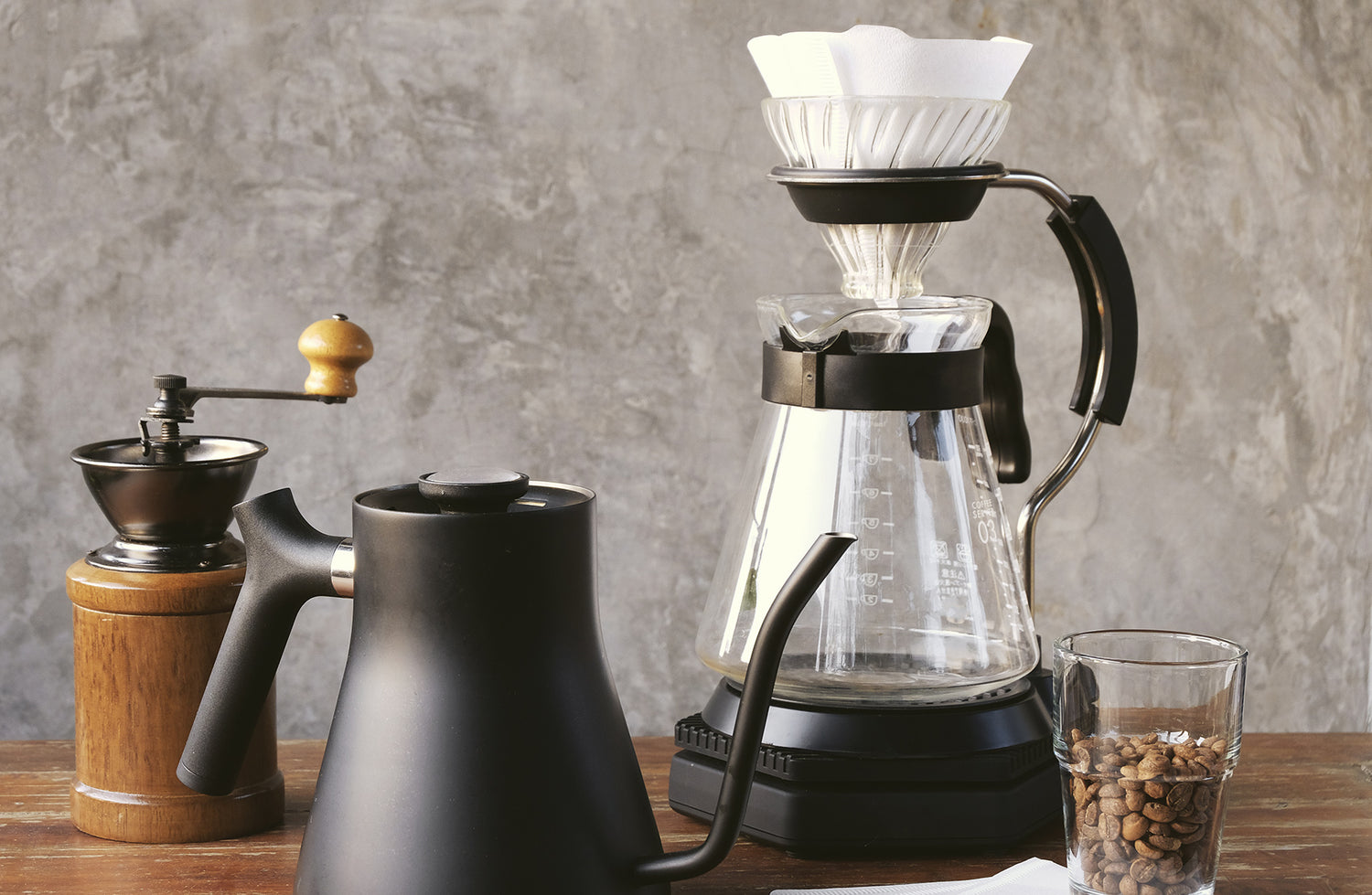Wondering which coffee you'll enjoy the most?
Here’s a quick guide to get you started.

These guidelines are a starting point to help you help you dial in your perfect hot brew.
Cold brewing has become popular in the past few years. If you want our pointers on a delicious and easy home cold brew check out our guide.
Measuring coffee by volume:
Use 2 Tablespoons of ground coffee for every 6 ounces of water.
Measuring coffee by weight:
Use a 1:18 ratio. For every gram of coffee, use 18 grams of water. So, for 3 x 6 ounce cups of coffee, use 30 grams of ground coffee and 532 grams of water.
Please note: This is a starting point! Some coffees will taste better to you with a little more or a little less coffee in this amount of water.
Then: If the coffee tastes bitter, reduce the grounds the next time by 10%. If the coffee tastes weak, add 10% more grounds.
Some more things to consider
Get the most our of your coffee and enjoy every sip with a few extra guidelines.
Grinding
If at all possible, grind your coffee beans just before you brew. Here’s why: A whole bean has much more surface area. The longer this surface area is exposed to air, the more flavor it loses, and the faster the oils in the coffee are exposed to air, leading to rancid coffee. No matter how amazing your beans may be, rancid coffee is rancid coffee.
Grinding Guide
If you don’t have your own grinder, we highly recommend making the investment at some point. The difference in flavor of freshly ground versus pre-ground can be significant! If you are going to spend money on any piece of equipment, almost every coffee enthusiast will agree that a burr or mill grinder should be at the top of your list. These produce a much more consistently, which in turn means extraction from from the beans will be more consistent. This will give you a tasty and consistent brew.

Remember to let your coffee bloom!
Bloom in coffee is the bubbles that come out of your brew. The bubbles are carbon dioxide escaping the beans. By allowing your coffee to bloom, you are helping the carbon dioxide escape, which in turn allows the water to actually touch the coffee beans and thus extract the water soluble elements from the beans that make the drink what it is. To allow your coffee to bloom, plus enough hot water over the ground beans to wet all the beans, and then watch the magic as it bubbles up. After 30-45 seconds you can resume pouring in your water.
Timing
Timing is important. If you are using a french press, for example, brewing longer than the recommended time, approximately 4 minutes, will lead to over extracted coffee - which translates to bitter coffee! So check with the manufacturers of your brew equipment of choice.
Water should be just below boiling point when you pour it into your ground beans. Ideally pour it when it is between 202-205 degrees Fahrenheit. (Boiling point at sea level is 212 degrees Fahrenheit) so if you are heating water on the stove or a kettle we suggest letting it sit for minute or two after boiling and before pouring. If you want something more precise, you can purchase electric kettles with temperature gauges. A gooseneck kettle is best: it helps you get turbulence in the grounds as you pout in the water,, which stirs the grounds into the beans for aqua distribution. The quality of your water also matters. The Specialty Coffee Association (SAC) recommends that your water minerals total hardness of 50-175 ppm CaCO3, a carbonate hardness of 40-75 ppm CaCO3, and a pH of 6-8. We know this is ore thank almost anyone will know about your coffee, but if your coffee tastes funny even when you are doing everything else right, we suggest that you call your local water bureau and ask about the composition of your tap water.
Clean equipment
Last but absolutely not least, whatever you use to brew, make sure there is no buildup of coffee from previous use. Buildup will have rancid coffee oils that make even the best coffee taste terrible. Use hot water to clean your equipment daily. It is generally not recommended that yours dish soap because it is almost impossible to rinse out completely.

A Final Note
If your coffee tastes bitter, try brewing with a little less coffee.
Sometimes a little restraint goes a long way (this, written by someone who used to live by the coffee mantra ‘the stronger the better’)
